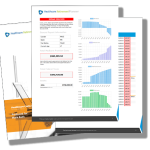The Dawn of AI Image Generation: Exploring Diffusion Models
In the ever-evolving landscape of artificial intelligence, the advent of AI-driven image generation has marked a significant milestone. Among the various techniques that have emerged, diffusion models stand out for their unique approach to creating intricate and lifelike images from textual descriptions. This article delves into the intricacies of diffusion models, shedding light on how they are transforming the field of AI image generation.
Understanding Diffusion Models
At their core, diffusion models are a type of generative model that gradually constructs images through a process of adding and then removing noise. Initially, these models start with a random distribution of pixels, or noise, and through successive iterations, they refine this noise into a coherent image that aligns with a given text prompt. The technique draws inspiration from natural processes, mimicking how particles diffuse through a medium over time.
The Evolution of AI Image Generation
AI image generation has undergone rapid advancements in recent years, Moving from simple, pattern-based creations to complex, detailed images that are often indistinguishable from photographs taken in the real world. The progression to using diffusion models represents a leap forward in this field, offering an unprecedented level of detail and realism. As these models continue to evolve, they are breaking new ground in creative applications, from digital art to visual content creation for media and entertainment.
Breaking New Ground with One-Step Image Generation
A groundbreaking development in this domain is the advent of one-step image generation. A recent research project has successfully developed a model capable of generating images in a single step, bypassing the traditional iterative process. This innovation not only speeds up the image creation process but also opens new avenues for real-time applications in gaming, virtual reality, and interactive media.
The Significance of One-Step Image Generation
The implications of this new approach are profound. By significantly reducing the time required to generate images, one-step image generation models are poised to revolutionize industries that rely on rapid content creation. Moreover, this method holds promise for enhancing the efficiency of data visualization tools, enabling instant generation of complex graphical representations from large datasets.
Read the full research paper: https://arxiv.org/abs/2311.18828
The Future of AI Image Generation
As diffusion models and one-step image generation techniques continue to mature, the potential applications seem boundless. From augmenting creative processes in art and design to automating content creation in news and social media, the impact of these technologies will be felt across a wide range of sectors. Additionally, as these models become more accessible and user-friendly, we can anticipate a surge in innovative applications that have yet to be imagined.
Challenges and Ethical Considerations
Despite the excitement surrounding AI image generation, it is crucial to address the challenges and ethical considerations that accompany its use. Issues such as copyright infringement, the potential for creating misleading images, and the impact on Professional artists and photographers are at the forefront of discussions. As we navigate these concerns, developing guidelines and regulations that foster innovation while protecting individuals’ rights and integrity becomes imperative.
Conclusion
The journey of AI image generation, particularly through the lens of diffusion models, highlights the incredible potential of artificial intelligence to reshape our visual world. As we stand on the brink of this new era, the balance between harnessing these technologies for positive impact and mitigating their risks will be key to realizing their full potential. The future of AI image generation is bright, brimming with possibilities that will undoubtedly transform the creative landscape.
